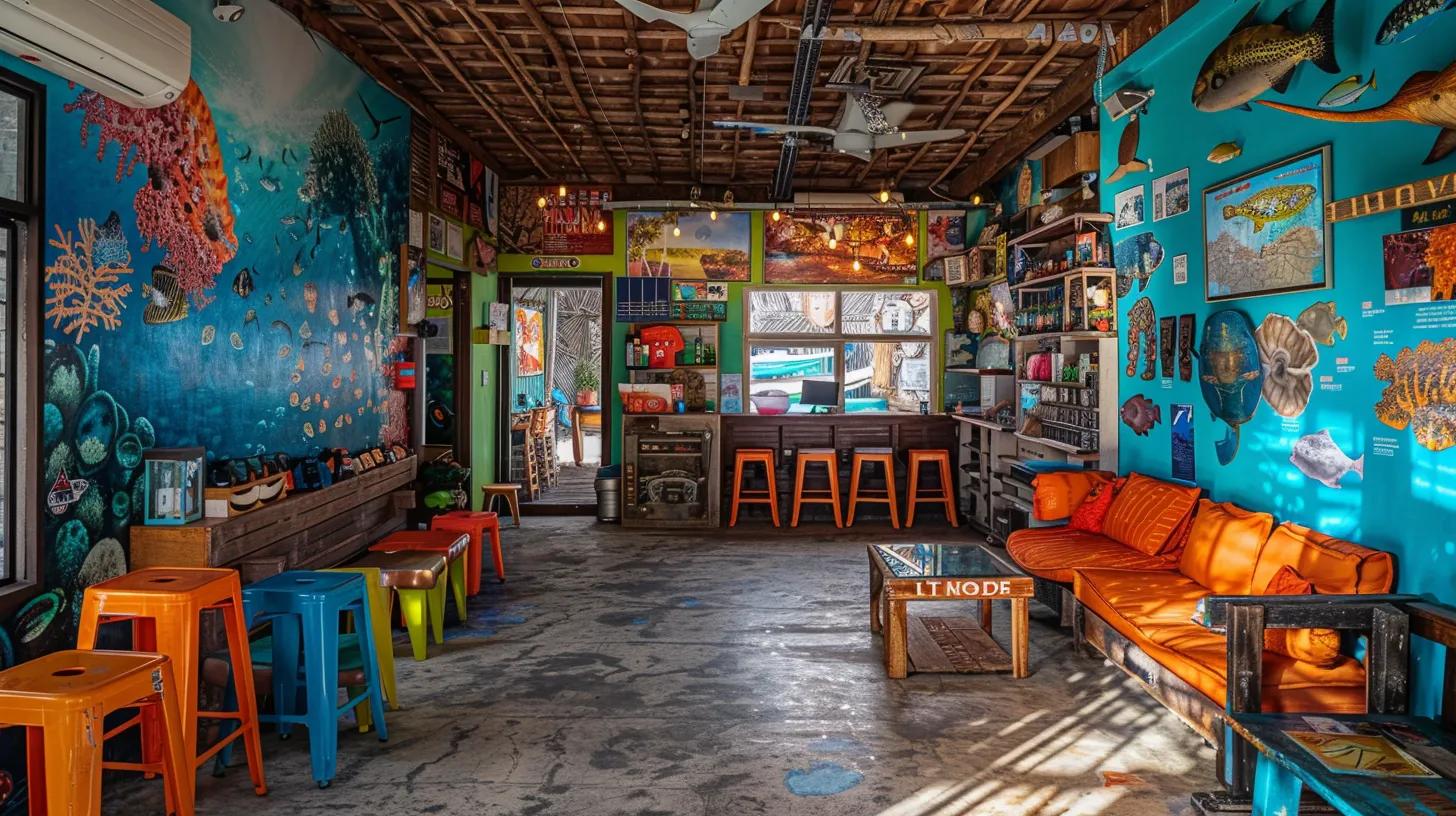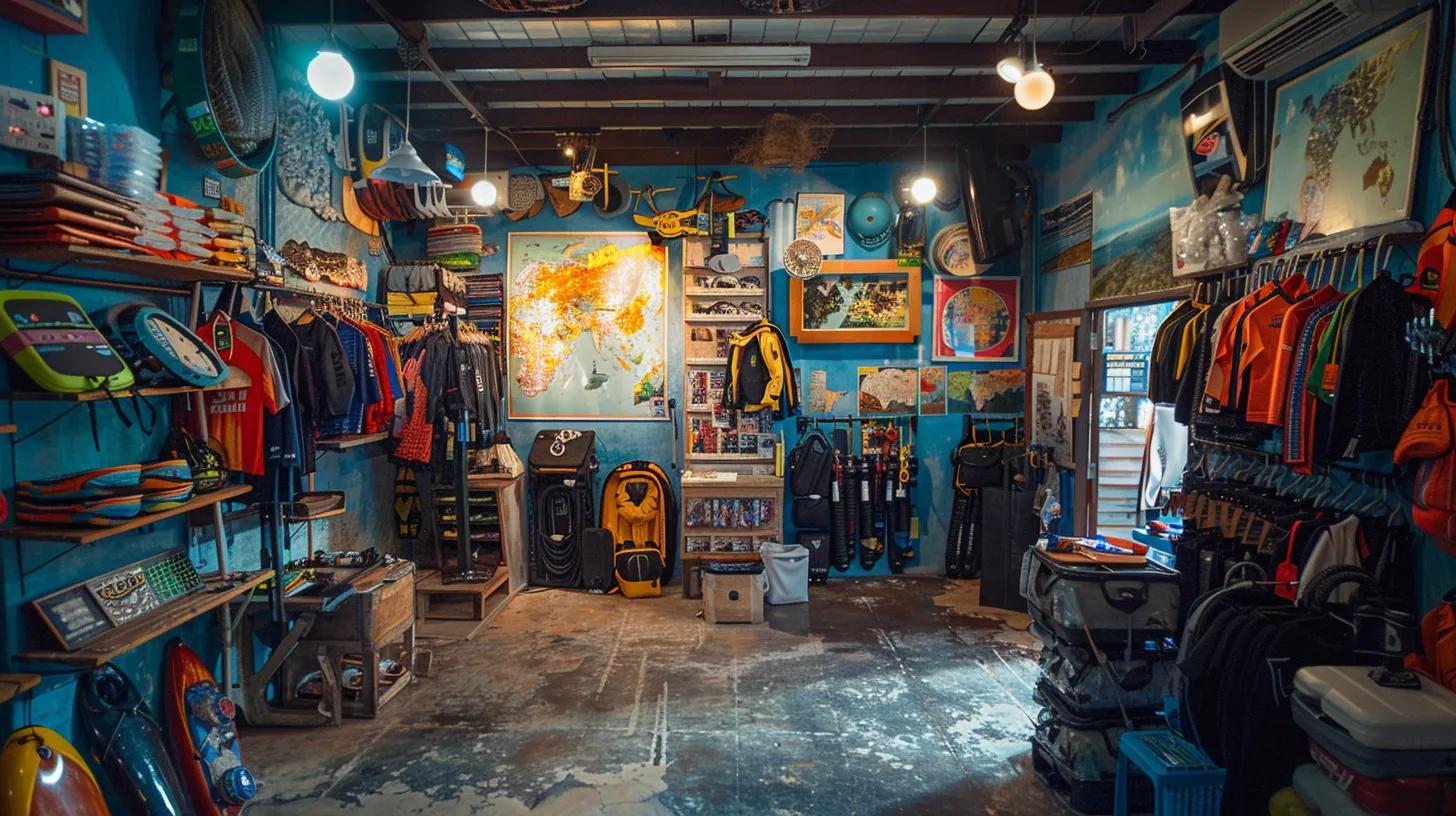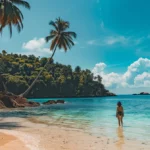
Table Of Contents:
- What Are the Best Diving Destinations in South West Asia?
- How Can You Plan the Perfect Diving Itinerary in South West Asia?
- When Is the Best Time to Dive in South West Asia?
- What Types of Diving Experiences Can You Find in South West Asia?
- Which Marine Life Can Divers Expect to Encounter in South West Asia?
- Where Should You Stay and Which Dive Operators Should You Choose?
- What Are Common Questions About Diving Itineraries in South West Asia?
- Frequently Asked Questions
- Final Thoughts
Diving in South West Asia offers an unparalleled adventure with vibrant coral gardens, fascinating shipwrecks, and diverse marine life beneath crystalline waters. In this article, you will discover diving itineraries designed for every skill level—from the beginner seeking calm, shallow reefs to advanced explorers after technical cave and wreck dives. This guide discusses the best destinations, itinerary planning, seasonal timing, dive encounters, marine life, and tips for choosing reliable accommodations and dive operators. You’ll learn practical tips based on firsthand experiences, current research on water conditions, dive safety practices, and advice to design your perfect expedition.
South West Asia is a vast region boasting surprising underwater landscapes often overlooked by mainstream divers. Whether drawn by Indonesia’s sprawling archipelago, Malaysia’s pristine reefs, Thailand’s rich marine biodiversity, or the rugged beauty of the Philippines, every destination has its own charm and diving signature. Each itinerary is designed to deepen your understanding of various dive environments. Planning a dive trip here requires awareness of local weather patterns, peak dive seasons, and unique underwater ecosystems.
This guide is intended to inspire your next dive adventure and provide step-by-step advice to help you avoid common pitfalls. You’ll discover how to balance adventure, safety, and budget while exploring world-class dive sites. From crafting the ideal itinerary that maximizes dive time to managing logistics like equipment rental and certifications, this article connects all the dots so you can travel confidently and with passion. Let’s dive into the details and discover the best diving itineraries South West Asia has to offer.
What Are the Best Diving Destinations in South West Asia?
South West Asia is renowned for its diverse diving spots, each offering distinct underwater features. The best destinations include countries known for exceptionally clear waters, unique marine biodiversity, and well-developed dive tourism.
Diving hotspots can be found where local conservation efforts have preserved and enhanced the natural underwater environment. For instance, Indonesia leads with places like Raja Ampat and Komodo National Park, where colorful coral reefs, species such as grey reef sharks and manta rays, and dramatic underwater landscapes sculpted by volcanic activity await. Similarly, Malaysia offers sites in Sipadan and the Perhentian Islands, celebrated for crystalline water clarity and vibrant coral communities.
Which Countries Offer the Top Diving Experiences?
The top experiences are predominantly in Indonesia, Malaysia, Thailand, and the Philippines. Indonesia’s archipelago offers everything from fringing reefs to remote atolls; Malaysia features both macro and pelagic species around its oceanic islands; Thailand is celebrated for its warm, accessible waters and diverse sites like the Similan Islands; and the Philippines boasts a rich mosaic of marine life, including wreck and drift diving adventures.
Indonesia is acclaimed for its biodiversity. Areas like the Coral Triangle host over 600 species of reef fish, making it a must-visit for biodiversity enthusiasts. In Thailand, the Andaman Sea and Gulf of Thailand create natural laboratories for exhilarating drift dives alongside species like barracuda and whales. The Philippines, with its deep blue waters and extensive coral gardens, offers refuges for rare species such as dugongs and elusive grey reef sharks.
What Are the Must-Visit Dive Sites in Indonesia, Malaysia, Thailand, and the Philippines?
Iconic sites should top your list. In Indonesia, Raja Ampat and Komodo National Park are renowned for natural beauty and biodiversity. Raja Ampat is famous for its rich coral and fish species, with divers reporting up to 1,300 species in one dive. Komodo National Park is equally notable for its underwater topography that hosts migratory species and schooling fish.
Malaysia’s Sipadan Island remains a bucket-list dive, renowned for its steep wall dives, turtle encounters, and vibrant barracuda schools. In Thailand, the Similan Islands and Koh Tao offer excellent visibility and unique drift diving experiences along coral walls and caverns. In the Philippines, sites like Tubbataha Reefs Natural Park (a UNESCOWorld Heritage Site) and Apo Island showcase pristine ecosystems with both macro and pelagic encounters.
How Do Dive Site Features Differ Across South West Asia?
Differences in dive site features are driven by local geological formations, water conditions, and marine biology. Indonesian sites feature diverse topography from shallow coral gardens to deep drop-offs and underwater volcanoes, with abundant reef fish. In Malaysia, dramatic vertical walls and steep slopes draw pelagic creatures due to nutrient upwelling.
Thailand’s dive sites capitalize on warm, calm waters ideal for drift diving past multicolored hard and soft corals, while the Philippines offers a mix—from technical wreck dives in low-light conditions to sunlit drift dives with soft corals and schooling triggerfish. Seasonal water temperature, visibility, and local biodiversity all influence the dive experience.
Below is a comparative table outlining some key differences:
This comparison shows that each country offers exceptional diving opportunities with unique features, helping you tailor your itinerary based on preferred dive conditions, marine encounters, and required technical skills.
How Can You Plan the Perfect Diving Itinerary in South West Asia?
Planning a diving itinerary here involves assessing your experience level, desired marine encounters, and logistical factors like trip duration, local regulations, and available accommodations. The process is best divided into: determining your skill level, exploring sample itineraries for beginners, intermediate, and advanced divers, and customizing your trip based on personal preferences.
Initially, consider how many dives you wish to undertake and what dive experiences you seek. Beginners might focus on easily accessible sites with calm conditions and shallow reefs, while intermediate itineraries may include a mix of drift and pelagic encounters. Advanced itineraries could incorporate technical dives, cave or wreck explorations, and longer trips covering multiple sites.
What Are Sample Itineraries for Beginner, Intermediate, and Advanced Divers?
For beginner divers, an itinerary might include four to five days in areas like Koh Tao or portions of the Similan Islands. Typical plans provide daily dives with ample surface intervals, introductory shore dives, and opportunities to explore local culture on off-days.
Intermediate divers may enjoy a week-long itinerary featuring both shore and boat dives, including drift experiences along nutrient-rich coral walls in Malaysia or Indonesia, with occasional guided night dives or wreck explorations.
Advanced divers can opt for itineraries spanning ten days or more, covering multiple renowned sites. These trips often include intensive technical dives, such as cave or wreck explorations in the Philippines or remote drift dives in the Komodo region. Advanced plans also involve specialized briefings on local hazards and equipment management, sometimes integrating cultural excursions and conservation participation.
How to Customize Your Diving Trip Based on Skill Level and Preferences?
Customizing your trip means aligning destination choices with your desired dive experiences, daily dive numbers, and recovery needs. Tailor your itinerary by considering factors like specific marine encounters—for instance, choosing macro photography sites in the Philippines or adrenaline-pumping drift dives in Thailand’s Andaman Sea.
Many dive tour operators offer customizable packages with extras like liveaboard experiences. A liveaboard trip, lasting several days, provides an immersive experience by exploring remote sites while enjoying onboard amenities. Consultations with experienced operators can help schedule dives to avoid peak sun hours, enhancing both safety and enjoyment.
Below is an example table summarizing sample itineraries:
Customizing your itinerary may involve using planning tools or speaking directly with dive operators to discuss interests, pacing, and comfort. It is essential that dive sessions include adequate surface intervals and that accommodations suit your relaxation needs. Balancing rigorous dive days with opportunities to explore local culture and cuisine will keep your energy levels high throughout the trip.
What Are the Recommended Trip Durations and Dive Site Combinations?
Trip durations typically range from a short 4-day getaway to extensive 10–14 day packages. Shorter trips suit beginners or those with limited time, focusing on one destination. Longer trips allow for itineraries covering multiple regions, such as diving in Malaysia followed by Indonesia. The right combination depends on factors like peak seasons, weather conditions, and transit times.
An effective itinerary balances travel with dive time. For multi-destination trips, plan transit days and acclimatization after long flights or boat rides. Many divers combine liveaboard experiences with shore dives to maximize underwater exploration while reducing travel stress.
When Is the Best Time to Dive in South West Asia?
Choosing the right time to dive is crucial for optimum underwater visibility, favorable weather, and safe conditions. The region’s diving seasons are influenced by monsoon patterns, water temperature shifts, and seasonal migrations. During the dry season, calm and clear water allows for extended bottom times and excellent photographic opportunities. Conversely, the rainy season offers nutrient-rich waters that attract different marine life, though visibility may be lower.
What Are the Peak Diving Seasons for Indonesia, Malaysia, Thailand, and the Philippines?
Peak seasons vary by country. In Indonesia, peak diving occurs from October to April, with best clarity in regions like Raja Ampat and Komodo. Malaysia is ideal from April to October, particularly around Sipadan, due to calmer seas and higher visibility. Thailand is most favorable from November to April, especially along the Andaman Sea, while the Philippines offers optimal conditions from December to May—with sites like Tubbataha sometimes open during controlled periods outside this window.
Local operators often advise traveling during shoulder seasons for benefits such as lower prices, fewer tourists, and consistently good underwater conditions since weather tends to be more predictable.
How Do Weather and Marine Life Migrations Affect Diving Conditions?
Seasonal weather patterns, marked by alternating wet and dry periods, impact water clarity and dynamics. During the dry season, reduced rainfall minimizes sediment deposits, leading to clearer water. Marine life behavior also shifts; during peak breeding or temperature changes, species like whale sharks, manta rays, and barracudas become more common.
Migrant species often follow food sources and cooler currents, sometimes forming large aggregations. Understanding these patterns can help time your dives to coincide with dynamic marine encounters. Dive tour operators frequently adjust itineraries based on current weather and migration data to maximize dive experiences while ensuring safety.
What Are the Advantages of Diving During Off-Peak Seasons?
Off-peak seasons offer benefits such as fewer crowds, which results in a more intimate diving experience with easier access to prime sites. Reduced tourist numbers mean less boat interference and a calmer exploration pace. Additionally, nutrient flows during these times can draw rare species not seen in peak periods. Lower travel costs on accommodations, dive packages, and local transport are further advantages. For experienced divers comfortable with a bit of unpredictability, off-peak diving can provide exciting and fulfilling encounters.
What Types of Diving Experiences Can You Find in South West Asia?
South West Asia caters to every diver’s preference and skill level, offering everything from reef diving and wreck explorations to exhilarating drift dives and challenging technical dives in caves and under overhangs. The variety is supported by the region’s unique geological formations, climatic conditions, and rich marine biodiversity.
Many popular experiences include reef diving, which lets divers explore extensive coral gardens teeming with brightly colored fish, sponges, and invertebrates. Reefs here serve as natural laboratories for marine research and are ideal for underwater photography. For history enthusiasts, wreck diving offers the chance to explore sunken vessels that act as artificial reefs and historical artifacts, providing insights into maritime heritage.
What Is Reef Diving and Where Are the Best Spots?
Reef diving involves exploring underwater coral systems where life clusters around intricate coral formations. In South West Asia, destinations such as the Similan Islands in Thailand, Sipadan in Malaysia, and Tubbataha Reefs in the Philippines are renowned for their vibrant marine colors and exceptional biodiversity. Reef divers enjoy slow-paced, shallow dives with abundant coral and marine life, making these spots accessible to novices and rewarding for experienced divers alike.
How to Experience Wreck, Drift, and Night Diving in the Region?
Wreck diving attracts those interested in maritime history and technical challenges. South West Asia offers several wreck sites where sunken vessels create artificial reefs. Drift diving uses natural currents to transport divers along expansive reef walls, providing an exhilarating experience and revealing hidden underwater treasures.
Night diving opens up a different world, allowing divers to observe nocturnal creatures and bioluminescence rarely seen during the day. With specialized gear and experienced guides, night dives are conducted with strict safety protocols to ensure a memorable experience.
What Equipment and Skills Are Needed for Technical and Cave Diving?
Technical and cave diving require specialized equipment and advanced skills due to the complexities involved. Technical diving involves deeper depths and confined spaces, which necessitates extra tanks, redundant air supplies, advanced dive computers, and decompression training. Cave diving requires proper deployment of guidelines, proficient overhead navigation, and robust buoyancy control. Advanced certifications and thorough briefings are essential to safely experience these challenging dives.
Below is a table summarizing various dive types and their requirements:
This table highlights the diversity of experiences available in South West Asia and the importance of proper certifications and equipment for maximizing both safety and enjoyment.
Which Marine Life Can Divers Expect to Encounter in South West Asia?
The region’s vibrant and diverse marine life is one of its greatest attractions. Divers can encounter a spectrum of species from small, colorful reef fish and macro critters to larger pelagic animals and occasional migratory visitors. This abundance is due to thriving coral ecosystems, nutrient-rich waters, and effective local conservation measures.
What Are the Iconic Species Found at Popular Dive Sites?
Iconic species include the elusive grey reef shark, majestic manta rays, and occasionally whale sharks. Divers often encounter schools of barracuda, vividly colored angelfish, and various triggerfish that animate the coral reefs. Unique encounters, like swimming with dugongs or sighting rare macro creatures such as pipefish and frogfish, further enhance the dive experience.
Scientific surveys and anecdotal reports note frequent sightings of diverse species in sheltered reef environments. For example, at Sipadan, divers sometimes document up to 50 different species in a single dive, while nutrient dynamics help attract larger species during certain migrations.
How Does Marine Biodiversity Vary Between Dive Locations?
Biodiversity can vary widely. In Raja Ampat, the vast variety of coral—over 550 species—creates microhabitats supporting many fish, mollusks, and invertebrates. In contrast, Thailand’s drift dives may showcase larger pelagic species like whale sharks and barracudas against a backdrop of fewer coral species. Additionally, wreck and cave dives in the Philippines often reveal unique fauna adapted to low-light conditions, offering a stark contrast to bustling reef ecosystems.
What Are Responsible Practices for Protecting Marine Life While Diving?
Sustainable diving practices are essential for preserving these fragile ecosystems. Divers should maintain neutral buoyancy to avoid damaging coral, refrain from touching marine creatures, and use reef-safe sunscreen. Adhering to local guidelines and supporting conservation efforts—such as reef clean-ups and regulated dive limits—helps ensure that these underwater wonders remain healthy for future generations.
Below is a list summarizing responsible practices:
- Maintain neutral buoyancy.
- Use reef-safe sunscreen.
- Avoid touching or disturbing marine life.
- Follow local dive guidelines.
- Support conservation projects.
- Leave no trace.
- Report any damage immediately.
Where Should You Stay and Which Dive Operators Should You Choose?
Choosing the right accommodations and dive operators is crucial to your overall experience. Options range from luxury liveaboards and high-end resorts to budget-friendly hotels and guesthouses, catering to every diver’s needs—whether you seek comfort or wish to maximize dive time on a budget.
What Are the Best Resorts, Hotels, and Liveaboards for Divers?
Top resorts and liveaboards in South West Asia are designed with divers in mind. Liveaboard trips, for example, offer immersive experiences by taking you directly from boat to dive site, often including extended dive sessions and onboard seminars. Resorts in destinations like Sipadan and Bali provide specialized dive packages, combining luxury with adventure, complete with in-house dive centers and equipment rental.
Many dive centers are certified by bodies such as PADI or SSI, ensuring adherence to international safety standards. High-end operators may also offer guided trips, underwater photography workshops, and small group sessions to enhance your dive experience. Accommodations often provide practical amenities like dive gear storage, laundry services, and post-dive relaxation facilities.
How to Select Certified and Eco-Friendly Dive Operators?
Safety and environmental responsibility are paramount. Choose operators verified by PADI, SSI, or NAUI who adhere to international training and safety protocols. Eco-friendly operators demonstrate their commitment through sustainable practices, minimal environmental impact, and involvement in local conservation programs. Detailed briefings and transparent communication about their operational policies are key indicators of reliability.
What Services and Equipment Rentals Are Typically Available?
Most reputable operators offer full-service dive packages, including boat transfers, guided tours, and quality rental equipment such as regulators, BCDs, dive computers, and wetsuits. Additional services like underwater photography lessons, nitrox filling, and personalized dive itineraries based on local weather conditions are often available.
Below is a table summarizing common services and amenities:
What Are Common Questions About Diving Itineraries in South West Asia?
Planning your dive itinerary may raise questions about certifications, costs, and booking procedures. Common queries include the necessary certifications for safe diving, expected costs, and how to book a customized package that meets your interests.
What Certifications Are Required to Dive in South West Asia?
For recreational diving, a PADI Open Water Diver or equivalent certification is typically sufficient. More advanced dives—such as night, wreck, or drift diving—may require additional certifications like Advanced Open Water or Rescue Diver, and technical or cave dives require further advanced training. Check with local dive operators as some sites have higher entry requirements. Many centers offer refresher courses on site if needed.
How Much Does a Typical Diving Trip Cost in This Region?
Costs vary widely based on trip length, dive type, and accommodations. Budget packages for short trips with basic equipment may start at a few hundred dollars, while luxurious liveaboard or resort trips can cost several thousand dollars, especially with guided tours and specialized courses. On average, a week-long trip ranges from USD 800 to USD 3000, with lower prices during off-peak seasons.
How Can You Book Customized Diving Packages With Expert Guidance?
Most professional operators offer online booking systems that allow you to customize your itinerary by selecting equipment rentals, training courses, and additional services like photography workshops. Personal consultations via email or phone help tailor your vacation to balance adventure, relaxation, and cultural exploration. Comprehensive packages typically include logistics, dive briefings, and post-dive debriefings to ensure a stress-free experience.
Frequently Asked Questions
Q: What is the best way to plan a diving itinerary in South West Asia? A: Start by assessing your diving certification and experience, then choose destinations that match your skills. Use sample itineraries for beginners, intermediate, or advanced divers as a guide. Consult with certified local operators to customize a package that fits your schedule and desires, whether you seek reef, drift, or technical dives. Booking in advance and during off-peak seasons helps secure the best rates.
Q: When should I visit South West Asia for optimal diving conditions? A: Peak conditions vary: Indonesia is best from October to April, Malaysia from April to October, Thailand from November to April, and the Philippines from December to May. Off-peak seasons offer fewer crowds and lower prices, though visibility may vary. Check local weather and migration schedules to decide the best time.
Q: How do dive operators in South West Asia ensure environmental protection? A: Reputable operators adhere to strict sustainable practices, follow international safety certifications, use reef-safe products, and support local conservation. Many participate in reef restoration and educate divers on responsible practices to minimize reef damage.
Q: Are liveaboarddiving trips worth the investment? A: Yes. Liveaboard trips offer extended access to remote sites, maximizing dive time and providing immersive experiences with onboard relaxation and educational briefings. Though pricier than shore-based packages, they deliver a richer, more diverse diving experience.
Q: What precautions should I take for technical or cave diving in South West Asia? A: Technical and cave diving require extensive preparation, additional certifications, specialized equipment, and thorough pre-dive briefings. Always ensure your gear is in optimal condition and dive with a buddy or experienced guide. Local centers often offer refresher training and comprehensive safety briefings.
Q: Can I combine cultural experiences with my diving itinerary in South West Asia? A: Absolutely. Many dive packages integrate land tours, local cuisine experiences, and historical site visits, allowing you to engage with the region’s rich heritage alongside its natural wonders.
Q: What equipment rental options are available; should I bring my own gear? A: Most operators offer high-quality rental gear, including regulators, BCDs, dive computers, wetsuits, and masks. Renting locally is cost-effective, but if you prefer your own equipment for comfort or consistency, check for compatibility and rental policies with your operator.

Final Thoughts
Planning an ultimate diving itinerary in South West Asia merges breathtaking underwater landscapes with rich cultural encounters. By understanding the distinctive dive experiences, selecting the right time to visit, and tailoring your itinerary to your skill level, you can immerse yourself in unforgettable marine ecosystems. With dynamic dive sites ranging from vibrant coral reefs to challenging technical dives, this region is a must-visit for every serious diver. Embark on your journey with detailed planning and expert guidance, and create memories that last a lifetime.
Explore these itineraries, consult with experienced dive operators, and let the magic of South West Asia transform your diving adventures into an unparalleled journey beneath the waves.



